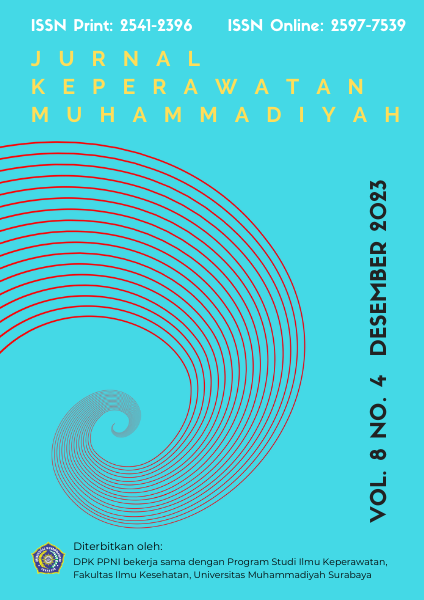Pengaruh Resistance Exercise Terhadap Nilai Ankle Brachial Index Dan Penurunan Kadar Glukosa Darah Pada Pasien Diabetes Melitus Tipe 2 Di Wilayah Kerja Puskesmas Poncokusumo Kab.Malang
DOI:
https://doi.org/10.30651/jkm.v8i4.20335Abstract
The aim of this study was to analyze the effect of resistance exercise on ankle brachial index values and reduced blood glucose levels in type 2 diabetes mellitus patients in the Poncokusumo Malang Community Health Center Working Area. This research design uses a Quasy Experiment with a pretest post test control group design approach. The research independent variable is resistance exercise. The dependent variables are the ankle brachial index value and blood sugar levels. The research population was Diabetes mellitus patients in the work area of the Poncokusumo Health Center, Malang Regency with a total of 80 patients. The sample was taken using a simple random sampling technique as many as 68 respondents who were divided into two groups, namely the experimental group and the control group. Data were collected using observation sheets and analyzed using the paired t test. The results of the paired t test show that the significance value for both groups is ρ = 0.000 < α = 0.05 so that H1 is accepted, meaning that there is an influence of exercise resistance on the value of the ankle brachial index and the reduction in blood sugar levels of DM patients at the Poncokusumo Health Center, Malang. Stretching movements in resistance exercise make the muscles more active. When exercise is done correctly and regularly, it can increase glucose absorption by cells and more carbohydrate breakdown, so that the patient's blood sugar levels become more stable and the ABI value increases. Resistance exercise is more effective in reducing blood sugar levels and increasing the ABI value of diabetes mellitus sufferers.
Downloads
Published
Issue
Section
License
Copyright (c) 2023 Yulia Ervianti

This work is licensed under a Creative Commons Attribution-ShareAlike 4.0 International License.
- Penulis tetap memegang hak atas karyanya dan memberikan hak publikasi pertama kepada jurnal ini yang secara simultan karya tersebut dilisensikan di bawah:Â Creative Commons Attribution-ShareAlike 4.0 International (CC BY-SA 4.0)













